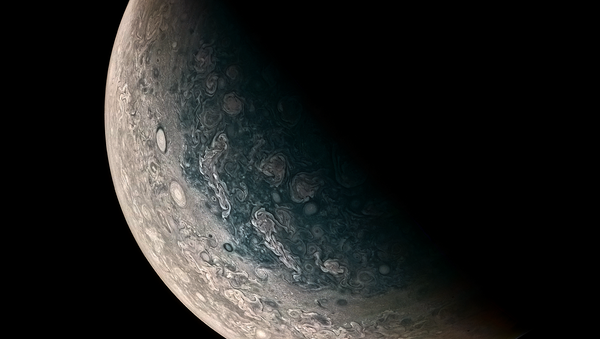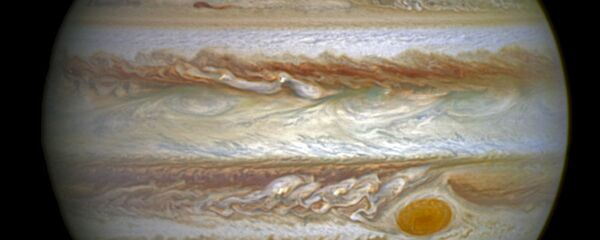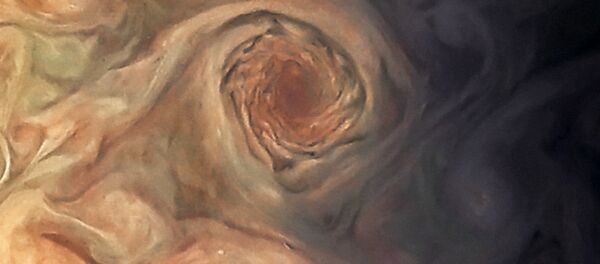WASHINGTON (Sputnik) — The Juno spacecraft’s initial close encounter with the planet Jupiter shows densely clustered swirling storms atop both poles and a planet with a magnetic field much larger than expected, the US National Aeronautics and Space Administration (NASA) said in a press release on Thursday.
Jawdropping view of Jupiter’s south pole, thanks to @nasa’s Juno probe. https://t.co/16dhh594hG pic.twitter.com/dPjKCZ6Atj
— Jim Roberts (@nycjim) 26 мая 2017 г.
"We knew, going in, that Jupiter would throw us some curves," Juno principal investigator from the Southwest Research Institute Scott Bolton stated in the release. "But now…there is so much going on here that we didn’t expect that we have had to take a step back and begin to rethink of this as a whole new Jupiter."
"We're questioning whether this is a dynamic system, and are we seeing just one stage, and over the next year, we're going to watch it disappear, or is this a stable configuration and these storms are circulating around one another?" Bolton noted.
Measurements of the massive planet’s magnetosphere indicate that Jupiter’s magnetic field is stronger than expected, more irregular in shape and about 10 times stronger than Earth’s, according to the release.
The next pass will take Juno over the planet’s red spot, the release explained. The feature that has baffled scientists since the telescope was first invented.
Jupiter, the largest and oldest planet in the Solar System consists of a giant ball of gas held in place by gravity. Scientist hope the mission will reveal clues on how planets with solid land masses, such as Earth, were created.





